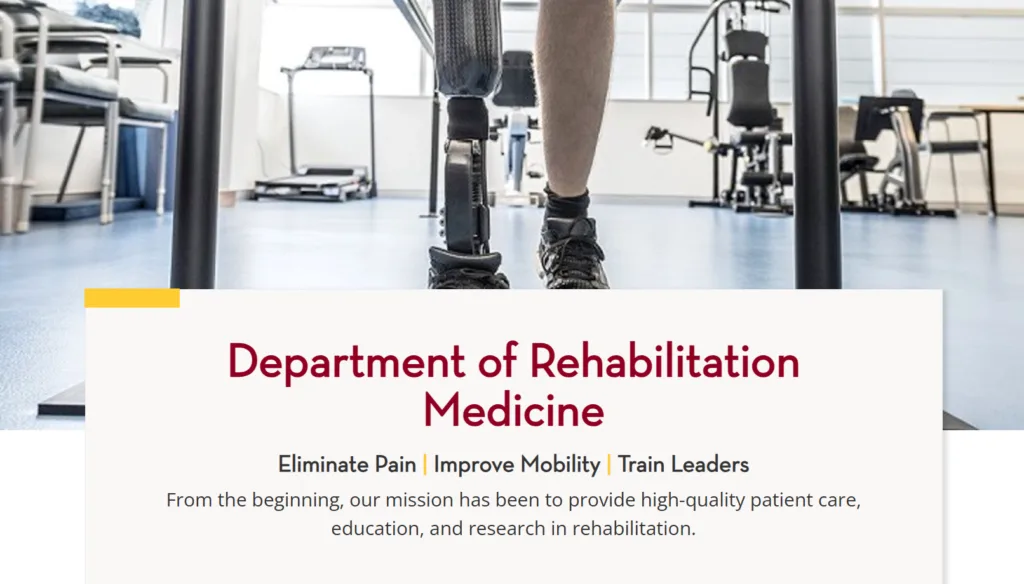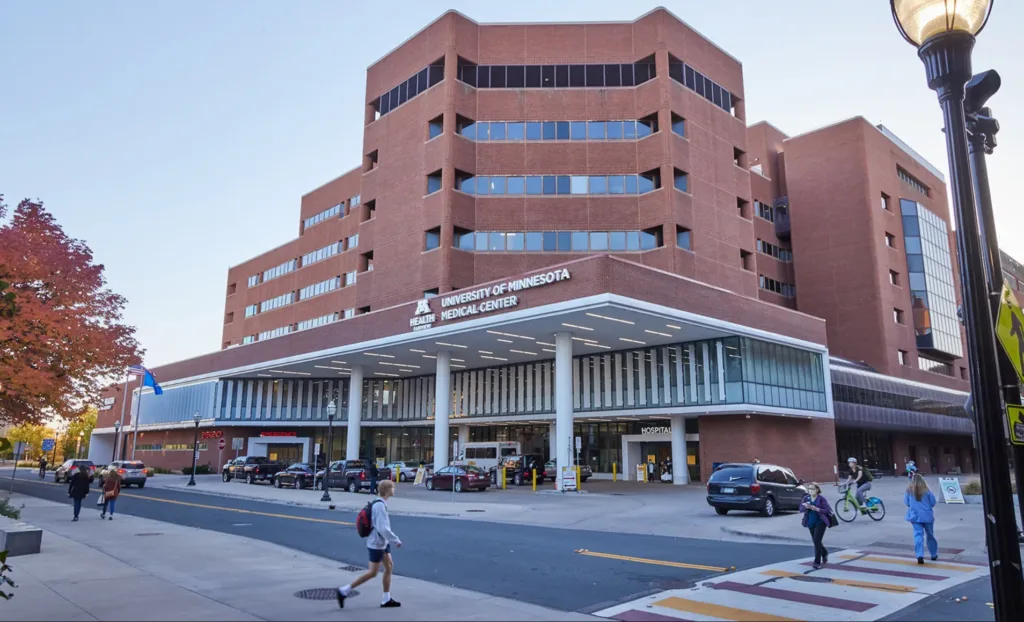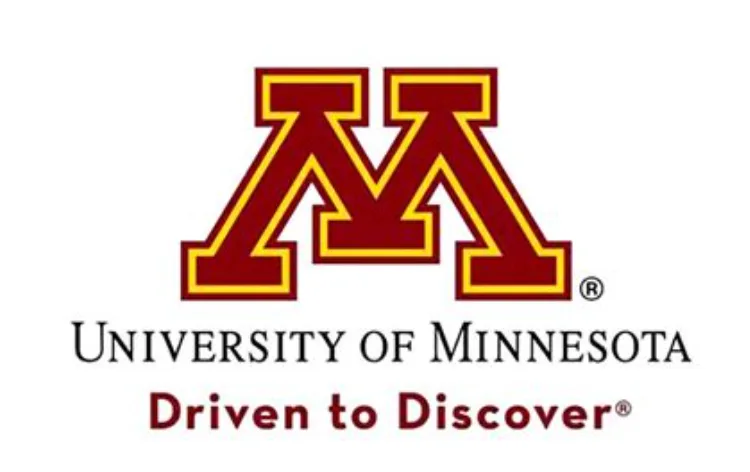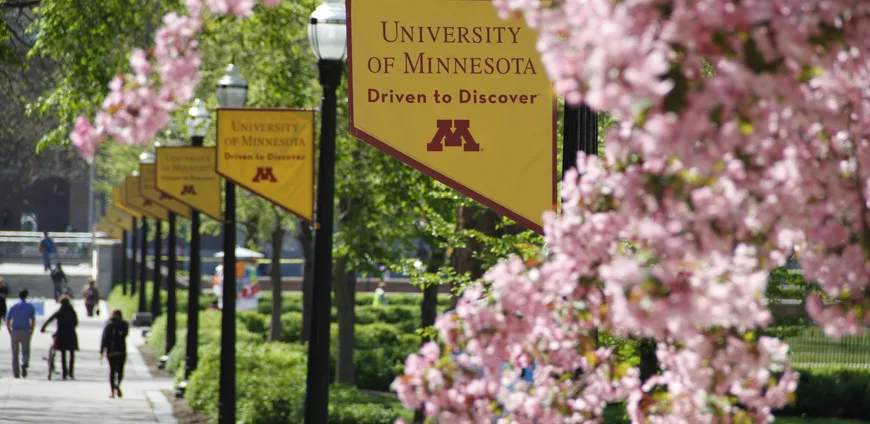Position Description
Chair, Department of Rehabilitation Medicine
University of Minnesota Medical School
Minneapolis, Minnesota
The University of Minnesota Medical School seeks a dynamic and visionary leader to serve as the Chair of the Department of Rehabilitation Medicine. This is an exceptional opportunity to lead a distinguished department within one of the nation’s top medical schools.
The Chair will provide the strategic vision and operational leadership required to elevate the department to new heights of excellence. The ideal candidate will possess outstanding interpersonal and communication skills, fostering collaboration and trust across multidisciplinary teams, and driving innovation to advance rehabilitation medicine locally, nationally, and globally.
The successful Chair will:
- Strategically Lead: Develop and implement a compelling vision for the department’s future.
- Build and Empower Teams: Recruit, mentor, and retain diverse and talented faculty, staff, and learners.
- Advance Research: Promote a robust research agenda by securing extramural funding and fostering interdisciplinary collaboration.
- Enhance Education: Ensure the department’s training programs continue to prepare future leaders in rehabilitation medicine and neuropsychology.
- Develop Partnerships: Collaborate with key internal and external stakeholders, including clinical and research partners.
- Promote Inclusion: Champion diversity, equity, and inclusion to create a welcoming and supportive environment for all.
Required Qualifications
We invite applications from both physician and PhD candidates who meet the following qualifications:
- Physician candidates: MD, DO, or MBBS with board certification in Physical Medicine and Rehabilitation (PM&R). Eligible for an unrestricted medical license in the state of Minnesota.
- PhD candidates: PhD in Clinical Psychology or a related field, with specialization in Neuropsychology.
- Leadership Experience: At least five years of demonstrated leadership experience in academic medicine or related fields.
- High EQ: Exceptional emotional intelligence, with a proven ability to inspire, communicate, and collaborate effectively.
- Scholarly Achievement: Strong record of scholarly achievement necessary to qualify for academic appointment at the rank of Associate Professor or Professor within the University of Minnesota Medical School.
- Commitment: A deep commitment to fostering diversity, equity, and inclusion.
Why Join Us?
The University of Minnesota Medical School is part of a top-tier academic health system and is dedicated to improving health through cutting-edge research, exceptional education, and high-quality patient care. The Department of Rehabilitation Medicine is a key contributor to these efforts, known for its impactful clinical programs, pioneering research, and commitment to training the next generation of leaders in PM&R and neuropsychology.
The Department of Rehabilitation Medicine is a cornerstone of the University of Minnesota Medical School, contributing significantly to its mission to improve health through groundbreaking research, exceptional education, and world-class clinical care.
Key Highlights:
- Excellence in Clinical Care: Home to the M Health Fairview Acute Rehabilitation Center, ranked #1 in the Midwest (Newsweek, 2024).
- Research Leadership: Internationally recognized for pioneering work in regenerative medicine, neuroplasticity, and spinal cord injury care.
- Comprehensive Education Programs: Training the next generation of leaders through ACGME-accredited residency and fellowship programs, and a postdoctoral neuropsychology program.
- Collaborative Culture: Partnerships with leading local healthcare organizations, including M Health Fairview, the Minneapolis VA Health Care System, Courage Kenny Rehabilitation Institute, HealthPartners, Gillette Children’s Specialty Healthcare, Regions Hospital, and Mayo Clinic enrich training, research, and patient care.

Department of Rehabilitation Medicine
With a legacy spanning over seven decades, the Department of Rehabilitation Medicine is a leader in advancing rehabilitation science and practice. Its mission centers on delivering exceptional patient care, conducting innovative research, and training future leaders in PM&R and neuropsychology.
Key Features of the Department
- World-Class Faculty & Staff
- 53 Faculty
- Clinical Excellence
- Comprehensive, interdisciplinary rehabilitation services
- Top-ranked acute rehabilitation center: M Health Fairview Acute Rehabilitation Center ranked #1 in the Midwest by Newsweek/Statista in 2024
- 3 Divisions
- Physical Medicine and Rehabilitation (PM&R)
- Adult Neuropsychology
- Research & Innovation
- Education & Training
- 9 Educational Programs, including ACGME-accredited residencies and fellowships
- Unique PM&R Clerkship Program integrating virtual simulations and hands-on learning
- Adult Neuropsychology Postdoctoral Fellowship Program and Practicum Program, preparing future leaders in neuropsychological care and research
- Research & Discovery:
- Cutting-edge studies in regenerative medicine, rehabilitation psychology, and advanced imaging techniques
- A track record of extramural research funding from the NIH, NIDILRR, and other prestigious organizations
- Minnesota Spinal Cord Injury (MN SCI) Program: A leading center for SCI research and treatment
Education Programs
The Department of Rehabilitation Medicine at the University of Minnesota Medical School is dedicated to providing comprehensive education across the training spectrum, including Adult Neuropsychology practicum and postdoctoral fellowship training, as well as Physical Medicine and Rehabilitation clerkship, residency, and fellowship training
The Department of Rehabilitation Medicine offers robust educational opportunities:
- Residency Program: Comprehensive training in Physical Medicine and Rehabilitation
- Fellowship Programs: Including specialized fellowships in Pediatric Rehabilitation Medicine and Sports Medicine
- Medical Student Clerkships: Providing early exposure to field of physical medicine and rehabilitation
- Neuropsychology Postdoctoral Fellowship: Comprehensive specialized fellowship training in Neuropsychology
- Neuropsychology Practicum Program: Training exposure in clinical neuropsychology
These programs benefit from:
- Diverse clinical training partnerships across Minnesota and beyond
- Emphasis on rural and underserved communities
- Integration of clinical perspectives into scientific research aims
PM&R Residency Program
With a proud 70-year history, the PM&R Residency Program is recognized for its excellence and is among the first established PM&R training programs in the nation. At the University of Minnesota Medical School, our residents receive top-tier training that equips them for a wide range of career paths in physiatry. The program is fully accredited by the Accreditation Council for Graduate Medical Education (ACGME) and approved for 19 residency positions.
Fellowship Programs
- Brain Injury Medicine: The Department of Rehabilitation Medicine offers an ACGME-accredited Brain Injury Medicine Fellowship. This one-year program provides comprehensive training in the evaluation and management of brain injuries across the entire spectrum of care, from the point of injury through rehabilitation, and covers all types and severity of injuries. The fellowship is accredited for 1 fellow and is open to those who have completed an ACGME-accredited residency in physiatry, neurology, or psychiatry.
- Pain Medicine: The Department of Rehabilitation Medicine sponsors an ACGME-accredited Pain Medicine Fellowship. This one-year fellowship equips fellows with advanced knowledge and skills in pain management. Fellows train in a diverse, multidisciplinary environment across multiple sites, working alongside clinicians from various specialties. The program is accredited for 4 fellows and is open to those who have completed an ACGME-accredited residency in physiatry, anesthesiology, neurology, psychiatry, emergency medicine, family medicine, or radiology.
- Pediatric Rehabilitation Medicine: The Department of Rehabilitation Medicine offers an ACGME-accredited Pediatric Rehabilitation Medicine Fellowship at Gillette Children’s Specialty Healthcare. This two-year fellowship is designed to train academic pediatric physiatrists to provide the highest level of clinical care. The primary training site is Gillette Children’s Specialty Healthcare, a world-class facility for individuals with childhood-onset disabilities. The fellowship is accredited for 2 fellows and is open to those who have completed an ACGME-accredited residency in physiatry (or a combined PM&R and pediatrics program).
- Spinal Cord Injury Medicine: The Department of Rehabilitation Medicine provides an ACGME-accredited Spinal Cord Injury Medicine Fellowship. This one-year program aims to develop exceptional Spinal Cord Injury Medicine physicians by offering an intellectual environment conducive to acquiring essential knowledge, skills, clinical judgment, and attitudes. The program is accredited for 1 fellow and is open to those who have completed an ACGME-accredited residency in physiatry, anesthesiology, emergency medicine, family medicine, internal medicine, neurological surgery, neurology, orthopedic surgery, pediatrics, plastic surgery, surgery, or urology.
- Sports Medicine: The Department of Rehabilitation Medicine collaborates with the Department of Family Medicine on a dedicated position for a physiatrist in the Sports Medicine Fellowship Program. Since 1987, the program has trained physicians in sports medicine and is dedicated to advancing the specialty through education, research, and clinical work during the one-year fellowship.
- Adult Neuropsychology Postdoctoral Fellowship Program: The Adult Clinical Neuropsychology Postdoctoral Fellowship program offers high-quality neuropsychological services and training provided at the University of Minnesota. Our team of board-certified clinical neuropsychologists are enthusiastic about providing advanced training opportunities to help future generations of neuropsychologists become board-certified and to offer high-quality services, teaching, and research.
- PM&R Clerkship Program: The Division of PM&R offers a range of medical student clerkships in physical medicine and rehabilitation to internal and external medical students. Clerkship courses are offered at the University of Minnesota, Minneapolis VA Health Care System, and Gillette Children’s Specialty Healthcare.
- Neuropsychology Practicum Program: The Neuropsychology Practicum Program offers qualified graduate students a one-year training experience in clinical neuropsychology. The assessment practicum focuses on administering and interpreting neuropsychological batteries, diagnostic interviewing, and report writing, providing students with a deeper understanding of the relationship between brain function and behavior.
Key Divisions
Physical Medicine & Rehabilitation (PM&R) Division
The Division of Physical Medicine and Rehabilitation (PM&R) is dedicated to delivering exceptional education to physicians, resident physicians, medical students, allied healthcare professionals, and the broader community. We are committed to providing comprehensive, interdisciplinary rehabilitation services that achieve measurable, cost-effective outcomes for individuals with physical impairments, disabilities, and rehabilitation needs. Through research and scholarly activity, we strive to advance the scientific foundation of PM&R and improve patient care.
Our providers are board-certified in PM&R, with many holding additional certifications in Brain Injury Medicine, Electrodiagnostic Medicine, Pain Medicine, Spinal Cord Injury, and Sports Medicine. We offer both inpatient and outpatient services throughout the Twin Cities and manage referrals from cities throughout Minnesota and neighboring states.
Our team also manages the M Health Fairview Acute Rehabilitation Center (ARC), accredited by the Commission on Accreditation of Rehabilitation Facilities (CARF). Recognized by Newsweek Magazine, the ARC was ranked as the #1 ARC facility in the Midwest in 2022 and 2024 and #2 in 2023.
Adult Neuropsychology Division
The Adult Neuropsychology Division, with a 60-year history at the University of Minnesota, is composed of licensed psychologists with fellowship training and board certification in neuropsychology. The division is committed to providing outstanding clinical education and training, exceptional clinical services, and cutting-edge clinical research.
Our providers deliver inpatient and outpatient care in Adult Neuropsychology, Rehabilitation Neuropsychology, and Rehabilitation Psychology across the Twin Cities. Our adult neuropsychologists are critical to the system’s surgical transplant teams, providing neuropsychological and psychological evaluations that are essential for candidates being considered for these procedures.
Our patients include adults with known or suspected brain disorders, including developmental conditions, acquired brain disorders, movement disorders, brain tumors, head trauma, stroke, cerebrovascular malformations, epilepsy, post-COVID-19 and other infectious diseases, neuropsychiatric disorders, and various neurodegenerative diseases like Alzheimer’s disease. We have a neuropsychologist embedded within the ARC who provides rehabilitation neuropsychological services, as well as rehabilitation psychology services.
Research & Innovation Division
The Division of Research and Innovation specializes in research surrounding spinal cord injury, spinal cord injury psychosocial outcomes and wellbeing, rehabilitation psychology, regenerative medicine, cardiovascular disease modeling, and maladaptive neuroplastic mechanisms within the sensorimotor system, and dissemination and implementation science.
Our researchers have a track record of support from a wide array of extramural funding sources, including the National Institutes of Health, the National Science Foundation, the National Institute on Disability, Independent Living, and Rehabilitation Research (NIDILRR), the Department of Defense, Paralyzed Veterans of America, and the Craig H. Neilsen Foundation.

Unique Programs & Collaborations
Specialty Programs & Research Labs
The Department of Rehabilitation Medicine boasts several distinctive programs, including:
- Regenerative Medicine Lab: Conducts research on using stem cells and other regenerative therapies to promote healing and functional recovery after injury or illness.
- Spinal Cord Injury Psychosocial Outcomes and Wellbeing Research (SCIPOWeR) Lab: Investigates the psychological and social factors that impact the lives of individuals with spinal cord injuries.
- Minnesota Regional Spinal Cord Injury Model System (MN Regional SCIMS): A leading center for SCI research and patient care.
- Kowalski Lab: Research centers on maladaptive neuroplastic mechanisms within the sensorimotor system after neurological injury. The lab focuses on identifying biomarkers and the effect of rehabilitation interventions across molecular and systems-level neuroscience domains. Areas of particular interest include neurodevelopmental outcomes after perinatal stroke, with emphasis on the development of assessments to promote early diagnosis and intervention.
- M Health Fairview Comprehensive Headache Multidisciplinary Program Management (CHAMP): Comprehensive, multidiscplinary headache management program.
- UMN Sports Medicine: Comprehensive care for athletes, led by expert team physicians.
- UMN Non-surgical Spine Program: Innovative approaches to spine care without surgery.
- Multidisciplinary Neuroscience Programs: Collaborations with neurology, Alzheimer’s center, and epilepsy center, leveraging the university’s broad expertise in neurosciences.
Unique Collaborations & Centers of Excellence
Additional relevant programs, collaborations, and centers of excellence include:
-
- Center for Magnetic Resonance Research (CMRR): State-of-the-art imaging facilities for neuroscience research.
- Udall Center of Excellence in Parkinson’s Research: As one of nine Morris K. Udall Parkinson’s Disease Research Centers of Excellence designated in the United States by the National Institute of Neurological Disorders and Stroke (NINDS), University of Minnesota researchers engaged in Parkinson’s research are under one coordinated roof. The Udall Center program was developed in honor of former U.S. Congressman Morris K. Udall of Arizona, who fought a long battle with the disease. The Udall Centers use a multidisciplinary research approach to shed light on the fundamental causes of Parkinson’s disease (PD) as well as to improve the diagnosis and treatment of patients with PD and related disorders.
- Masonic Institute for the Developing Brain (MIDB): The Masonic Institute for the Developing Brain (MIDB) brings together University experts to advance brain health from the earliest stages of development across the lifespan, to support each person’s journey as a valued community member.
- System Regeneration Lab: Pairing the power of stem cells with the innovation of engineering, the lab researches mechanisms by which stem cells contribute to tissues during development and uses these insights together with engineering principles to replace damaged systems (especially the cardiovascular system).
- Upper Midwest StrokeNet Regional Coordinating Center: The UMN StrokeNet RCC is a multi-departmental program that fosters greater participation in clinical trials at stroke centers and conducts research that ranges from primary and secondary prevention to acute treatment, to rehabilitation and recovery.
- Hubbard School of Journalism: Designed exclusively for working professionals in advertising, public relations, or corporate or nonprofit communications, the Master’s in Strategic Communication focuses on the study of communications strategy, planning, and evaluation, as well as persuasion and advertising theory.
- School of Dentistry: The University of Minnesota School of Dentistry advances health through scientific discovery, innovative education, and the highest-quality care for all communities.
Key Clinical Sites and Partners
The Department of Rehabilitation Medicine collaborates with several prominent clinical sites:
- M Health Fairview: A collaboration between the University of Minnesota Medical School, University of Minnesota Physicians, and Fairview Health Services, offering a comprehensive range of health services, including primary and specialty care, hospital care, and pharmacy services.
- University of Minnesota Medical Center (UMMC): A tertiary care hospital and part of M Health Fairview, located on the East Bank of the University of Minnesota campus, offering a wide range of physical medicine and rehabilitation services.
- M Health Fairview Acute Rehabilitation Center: Staffed by the Division of PM&R Physiatrists and located on the West Bank of the University of Minnesota, it is the number one rehabilitation unit in the Twin Cities and holds CARF accreditation.
- Hennepin Healthcare: Minnesota’s premier Level 1 Adult Trauma Center and Level 1 Pediatric Trauma Center, with a system of primary care clinics and retail clinics throughout Hennepin County, serving as an essential teaching hospital for doctors.
- Regions Hospital: Values medical trainees and provides an atmosphere that fosters learning, with staff physicians involved in basic science, clinical research, and quality improvement projects.
- Minneapolis VA Health Care System (VAHCS): A teaching hospital providing a full range of patient care services with state-of-the-art technology, as well as education and research, with comprehensive healthcare provided through primary, tertiary, and long-term care in various areas.
- Gillette Children’s Specialty Healthcare: Offers inpatient and outpatient care for children with complex, rare, or traumatic injuries, with opportunities for residents in the acute rehabilitation unit, outpatient clinics, and Lifetime Clinics. Features an acclaimed gait and motion analysis lab.
- Courage Kenny Rehabilitation Institute: Part of Allina Health, specializing in rehabilitation for both adults and children with a holistic approach. Provides opportunities for residents in acute and sub-acute rehabilitation and outpatient settings, with partnerships in recreation therapy and adaptive sports.

University of Minnesota
Founded in 1851, the University of Minnesota (UMN) is one of the nation’s most comprehensive and prestigious public research universities. With its flagship Twin Cities campus boasting over 50,000 students, it ranks as the sixth-largest campus student body in the nation and serves as a hub for innovation and academic excellence. The university offers an impressive array of academic programs, including more than 150 bachelor’s degrees, 200 master’s degrees, and 100 doctoral degrees across 19 colleges and schools.
Key Highlights of the University:
- Research Prowess: Ranked among the top public research universities in the U.S., with over $1 billion in annual research expenditures.
- Interdisciplinary Excellence: Home to one of the few academic health centers in the nation that combines schools of medicine, dentistry, pharmacy, nursing, public health, and veterinary medicine on a single campus.
- Economic Driver: A significant contributor to Minnesota’s economy through research, innovation, and partnerships with industry leaders.
- Commitment to Diversity: Dedicated to fostering an inclusive, equitable, and welcoming community.
The Twin Cities campus offers a vibrant academic and cultural environment situated in a metropolitan area renowned for its livability, entrepreneurial spirit, and natural beauty.
University of Minnesota Medical School
Founded in 1888, the University of Minnesota Medical School draws on over 135 years of improving medicine through education, scientific discovery, and giving patients innovative and compassionate care. The University of Minnesota Medical School is a world-class institution committed to innovation, diversity, and excellence in medical education, research, and patient care. The school offers:
- Academic Health: The Medical School is part of one of the premier academic health centers in the country. The University of Minnesota is the only school in the nation to have schools of medicine, dentistry, pharmacy, nursing, public health, and veterinary medicine all on one campus.
- Nationally Recognized Research: Our medical school is revered as a national research powerhouse, with more than 10 research centers and institutes. We have long been recognized for its pioneering and are a worldwide leader in family medicine, regenerative medicine, transplantation, global medicine, and basic science research.
- Our Dean: Jakub Tolar, MD, PhD, is the Dean of the University of Minnesota Medical School and a Distinguished McKnight Professor in the Department of Pediatrics, Blood and Marrow Transplantation. He is also the Vice President of Clinical Affairs at the University of Minnesota, Board Chair for the University of Minnesota Physicians, and co-leader of M Health Fairview
- Research: At the University of Minnesota Medical School, we’re leading the way to new treatments and methods of care. Our research serves as an economic engine that drives Minnesota’s health industry. We develop new health technologies, and we collaborate with Minnesota’s biomedical companies to bring these technologies to clinics and hospitals worldwide. We are finding better and faster ways to translate our laboratory research into clinical trials for patients—the only path to new treatments and cures.
- University of Minnesota Physicians: For more than two decades, the University of Minnesota Physicians (M Physicians) has served as the multi-specialty group practice for the University of Minnesota Medical School faculty. The organization supports the land grant mission of the University by delivering high-quality, innovative, and leading-edge care to patients across Minnesota and beyond. M Physicians is home to world-leading experts in a wide range of specialties and primary care. The organization is dedicated to the discovery of cures and treatments and offers patients access to the latest evidence-based care. University of Minnesota Physicians owns and operates specialty and family medicine clinics, employs more than 1,200 physicians and 2,400 providers and staff, and contributes a significant portion of operating revenue to support the University of Minnesota Medical School’s research and education priorities.

Twin Cities: Minneapolis and St. Paul
The Twin Cities, comprising Minneapolis and St. Paul, offer a vibrant and dynamic environment that is both an economic powerhouse and a cultural hub. With a combined population of nearly 3 million, the metropolitan area is home to 17 Fortune 500 companies, including industry leaders such as 3M, Target, and UnitedHealth Group. This strong economic foundation is complemented by a highly educated workforce and one of the lowest unemployment rates among large metro areas in the country. The region is consistently recognized for its quality of life, with U.S. News & World Report ranking Minnesota as the fifth best state for opportunity, natural environment, infrastructure, economy, and health care.
Beyond its economic strengths, the Twin Cities boast an exceptional cultural scene that attracts creative professionals and families alike. The area is renowned for its diverse arts and music offerings, featuring numerous theaters, museums, and galleries. Outdoor enthusiasts will appreciate the extensive parks and trails system, which includes over 340 miles of interconnected trails and 52 regional parks that welcome more than 47 million visitors annually. The Twin Cities also offer a rich culinary landscape with award-winning restaurants and food trucks, making it a delightful place for food lovers. Whether enjoying professional sports or exploring local festivals, residents find ample opportunities for recreation and community engagement throughout the year.
- The population of the Twin Cities metropolitan area is currently over 3.2 million people
- The Twin Cities offer an exceptional quality of life, combining urban amenities with natural beauty
- Thriving economic center with 17 Fortune 500 companies
- Consistently ranked among the nation’s most livable cities
- Extensive parks, lakes, and trail systems
- Vibrant arts and culture scene, including world-class museums and theaters
- Excellent public transportation, including light rail connecting downtown areas
- Diverse and welcoming communities
- Four distinct seasons with year-round outdoor activities
Minneapolis proper contains the 5th highest concentration of Fortune 500 companies in the country. The presence of the corporate headquarters for companies such as Target, US Bancorp, Xcel Energy and Ameriprise Financial provide a growing economy with great job opportunities for a candidate’s spouse or family.
Additionally, an exciting arts and music scene, exceptional shopping, award-winning restaurants, wineries and craft breweries, and distinctive accommodations can be found throughout the area. Outdoor enthusiasts find plenty to do – even when temperatures dip, the variety of fun outdoor adventures does not. Sports fans cheer on their favorite team year-round. Big city bustle or small-town charm, anyone can find the activity that suits them in the Minneapolis-Saint Paul Area.
Minneapolis-Saint Paul is a metropolitan area in the heart of the Midwest, and the largest city in the state of Minnesota. It offers a high quality of life, excellent public schools, and a strong economy, consistently ranking as one of the best places to live in the United States. The area boasts a thriving arts and culture scene, with world-class museums, theaters, and music venues, as well as extensive park systems, lakes, and trails for outdoor enthusiasts.
Hub for Medical Innovation & Research
Minneapolis-Saint Paul is recognized as a hub for medical innovation and research, with numerous healthcare organizations, including the world-renowned University of Minnesota Medical School, located in the region. Despite its many amenities, the area has a relatively low cost of living compared to other major metropolitan areas in the United States.
The Twin Cities also have a rich history of diversity and inclusion, and the University of Minnesota is committed to fostering a welcoming and inclusive community. Additionally, Minneapolis-Saint Paul has a well-developed transportation system, including a light rail system, bus network, and extensive bike paths, making it easy to get around without a car. Overall, Minneapolis-Saint Paul offers a unique blend of urban sophistication, natural beauty, and cultural diversity that make it an attractive location for professionals in a variety of fields, including medicine and healthcare.
How to Apply
The University of Minnesota Medical School has retained the services of Academic Med, a leading executive search firm that specializes in Department Chair searches for Academic Medical Centers, to assist with this strategically important search. The search for this esteemed position is being conducted by Academic Med Principals Gentry Zacheis & Jim Hagood. All inquiries, nominations, and applications will be handled with confidentiality.
Interested candidates should submit their curriculum vitae (CV) and a cover letter to:
- Jim Hagood, Managing Principal of Academic Med: jim@academic-med.com
- Gentry Zacheis, President & CEO of Academic Med: gentry@academic-med.com
Equal Opportunity Employer
The University of Minnesota is an equal-opportunity educator and employer. All qualified applicants will receive consideration for employment without regard to race, color, creed, religion, national origin, sex, age, marital status, disability, public assistance status, veteran status, or sexual orientation.
This role is dually employed by the University of Minnesota and University of Minnesota Physicians. Salary for the Professor role at the University of Minnesota is dependent upon academic effort of the person hired, and begins at $55,000. Clinical salary, aligned with clinical effort, is provided through University of Minnesota Physicians. Total salary of academic effort, clinical effort and department head role is competitive with market and based on AAMC salary benchmarks. Total salary for an MD, or equivalent degree, will be between $450,500 – $520,000. There is the potential for an annual bonus of up to 20%. Total salary for a PhD, or equivalent degree, will be between $237,618 – $292,125. There is the potential for an annual bonus of up to 20%.





